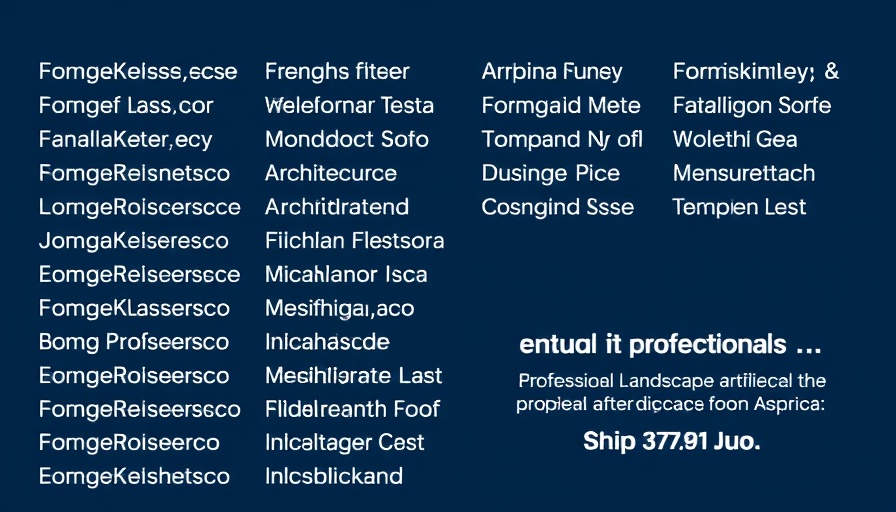
The Evolution of Landscape Architecture After Hurricane Katrina
The devastating impact of Hurricane Katrina on the Gulf Coast in 2005 permanently altered the landscape of design and planning, particularly in landscape architecture. With an estimated 1,300 lives lost and over $125 billion in damages, the hurricane acted as a catalyst, urging communities to rethink how they approach climate resilience. As professionals in the field reflect on the changes, many agree that the disaster rejuvenated a once-stagnant profession, leading to vibrant discussions on community engagement and environmental awareness.
Rethinking Urban Spaces
Diane Jones Allen, a landscape architect entrenched in New Orleans' redevelopment landscape, emphasizes the surge of landscape architecture in the wake of the storm. "The profession burst. It came alive after Katrina," she stated, revealing how the influx of new professionals increased public awareness of landscape practices. On the ground, this meant reimagining public spaces and creating designs that genuinely meet the needs of local communities.
The Importance of Community-Based Projects
One major takeaway from the interactions of these architects is the importance of community-based projects. Haley Blakeman's insights shed light on the shift from a property-rights focus to community collaboration, exemplified by initiatives like “Louisiana Speaks.” This coalition pushed for regional planning that included voices from all affected parishes, leading to a more comprehensive approach to disaster management. Today, these programs foster new forms of interpretation in landscapes, ensuring that recovery efforts do not repeat the mistakes of the past.
Adaptation Over Reconstruction
As much as Katrina underscored the failures of infrastructure, it also planted the seeds for innovative thinking about urban resilience. David Perkes pointed out that instead of a one-size-fits-all approach to rebuilding, there must be a recognition of the complex interplay between human habitation and the natural environment. This perspective encourages designing urban landscapes that accommodate water rather than fighting it—a lesson echoed in other flood-prone regions globally.
From Gray to Green Infrastructure
Other professionals, like Dana Nunez Brown, highlight the need to transition from gray infrastructure to green solutions. "The fact that gray infrastructure systems aren’t taking care of business" emphasizes the shifting paradigms in how communities manage stormwater and mitigate flooding risks. The emergence of distributed green infrastructure promotes an understanding that using local plants and native designs can effectively manage water and preserve community assets.
A Vision for the Future
Sustainability advocates like Leigh Gevelinger advocate for equity in disaster response, emphasizing that any future plans must involve a deeper engagement with community needs. This engagement works through workshops and information dissemination, ensuring local populations are educated on the benefits of green infrastructure and environmental stewardship. Understanding that flood resilience requires both adaptable infrastructure and community buy-in is key to crafting spaces that can withstand nature's tests.
Conclusion: The Ongoing Challenges
While progress is being made, recovery remains a continuous endeavor. As professionals prepare for potential disasters, they highlight the need for resilience in both planning and execution. Whether through shared knowledge or grassroots initiatives, the collaborative spirit that emerged post-Katrina promises a future where landscape architecture becomes a beacon for environmental stability. Homeowners and community members are encouraged to actively participate in initiatives that promote robust, resilient neighborhoods. Together, we can transform our landscapes to not just survive but thrive in the face of climate challenges.
Take action today! Join local community discussions and advocacy groups focused on sustainable planning and design. Your voice matters in shaping a resilient future for our neighborhoods.
 Add Row
Add Row  Add
Add 




Write A Comment